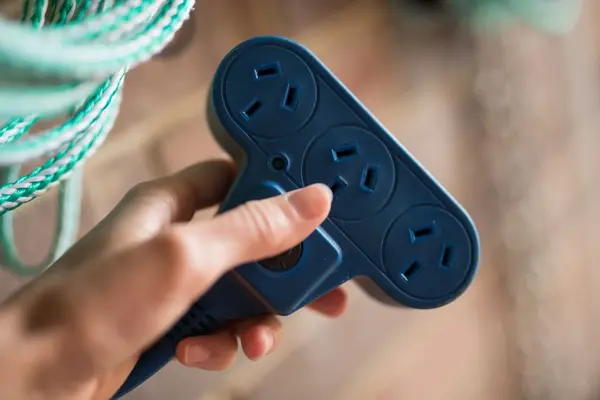Home Safety &Tech
Power Strip Safety: 15 Items to Avoid Plugging In

Power strips provide convenient extra outlets, but improper use can cause dangerous hazards. Following power strip safety tips is essential to prevent fires and electrical issues. Some devices draw too much power or cycle on and off, which risks overheating a power strip. Knowing which items to avoid plugging in keeps your home safe and your devices working properly.
Why Following Power Strip Safety Tips Matters
Power strips typically handle up to 1,800 watts at 15 amps, but some appliances demand more energy. Overloading a power strip causes overheating or trips circuit breakers. Also, power strips designed for dry areas should never be used in damp or wet locations. Therefore, always check the maximum wattage on your power strip and limit plugged-in devices accordingly.
15 Items You Should Never Plug Into a Power Strip
- Refrigerators
Refrigerators cycle power frequently, causing surges that overload power strips. They must be plugged directly into dedicated wall outlets to avoid tripping circuits or damage. - Microwaves
Microwaves consume high wattage for cooking and reheating. Use a dedicated wall outlet instead of a power strip to prevent overheating and ensure safety. - Coffee Makers
Coffee makers draw significant power, especially for prolonged use. Plugging them into a power strip can cause insufficient power supply or damage to the strip. - Toasters and Toaster Ovens
Heating elements in toasters require large power bursts. These devices should never use power strips as they risk causing dangerous overheating. - Slow Cookers
Slow cookers run for long periods and use steady power that can overload power strips. Always plug them directly into wall outlets for safe operation. - Hair-Care Appliances
Hair dryers, curling irons, and flat irons cycle on and off rapidly, drawing high current. To avoid circuit trips, plug them into GFCI-protected wall outlets. - Air Conditioners
Air conditioners require large power bursts when turning on. Plugging them into power strips can cause overheating or breaker trips, so always use dedicated outlets. - Sump Pumps
Sump pumps cycle power frequently and operate near water. They must be plugged into elevated GFCI outlets, never power strips, to avoid electrical hazards. - Air Compressors
Air compressors draw heavy loads at startup. Use heavy-duty extension cords or dedicated outlets rather than power strips to handle their power needs safely. - Another Power Strip
Daisy-chaining power strips violates safety codes and causes overloads. Avoid plugging one power strip into another or using extension cords with them. - Blenders
Blenders use powerful motors and high wattage. Their potential exposure to liquids also risks short circuits, so always plug them directly into kitchen GFCI outlets. - Washing Machines
Washing machines use high wattage during cycles and run unattended. Plug them only into dedicated outlets, never power strips, to prevent overheating risks. - Portable Heaters
Space heaters consume large amounts of energy for long durations. Plug heaters directly into wall outlets or heavy-duty cords and never leave them unattended. - Power Tools
Power tools require heavy-duty power supply. Use 220-volt power strips with grounded outlets and thick wiring to safely power tools like saws and drills. - Gaming Components
Gaming setups include many devices that cumulatively draw high wattage. Use surge-protected power strips and check total power consumption to avoid overloads.
Best Practices for Using Power Strips Safely
First, always check the wattage rating on your power strip and ensure the combined load stays below that limit. Avoid using power strips in wet areas unless they are GFCI-certified. Also, never daisy-chain power strips or use them with extension cords. Instead, unplug unused devices to make room for new ones safely. Lastly, consider investing in heavy-duty or surge-protected power strips for sensitive electronics.
Conclusion
By following these power strip safety tips, you protect your home from electrical hazards and ensure your devices operate efficiently. Always plug high-wattage or cyclical appliances directly into wall outlets. Use power strips only for low-power, continuous devices to prevent overheating and fires.
